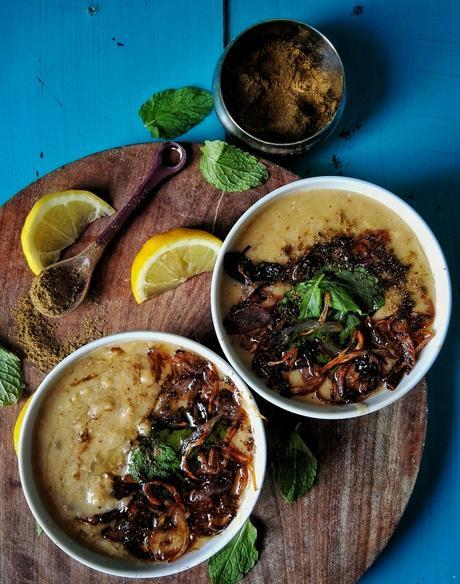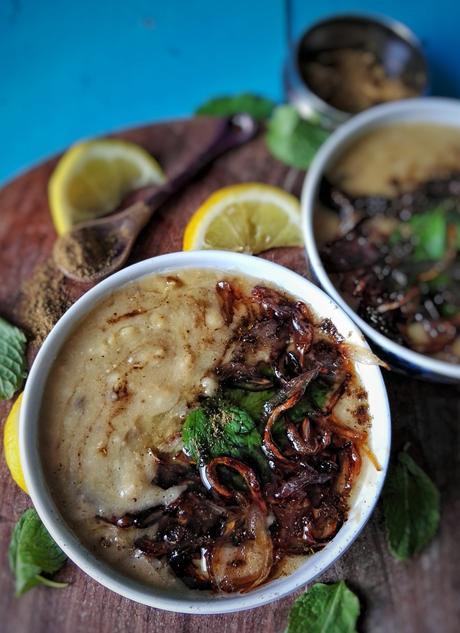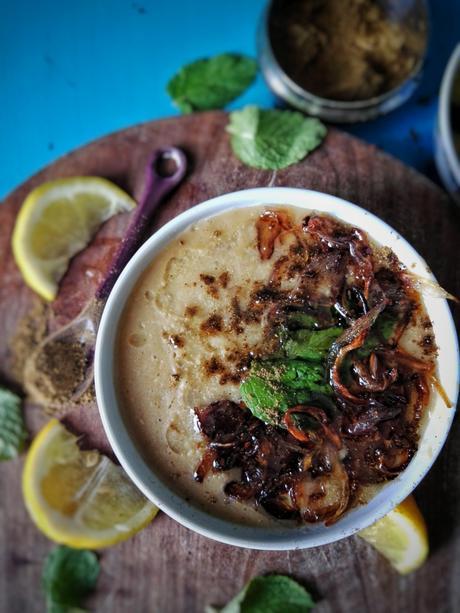Weather is finally cooling down in Dubai, which also means there would be more visits to the park, ditching the malls for good, barbecue sessions, loads of outdoor activities and keeping the windows open for that bright sunlight illuminating my house just like how we always did with our huge ceiling to floor windows all through the year back in Bombay. With the change in season means adopting a shift towards peculiar eating habits like there will be more soups and warm food on the menu for the next few months! Can you say I am excited?!
And, this time around, I have got for you a perfect winter indulgent dish from the kitchens of Bohras. Here I’ll use Khichda and Haleem mutually so as I try to tell you the difference between them. Both take deep roots in Middle Eastern countries known as Harissa; that traveled across South Asia becoming most popular amongst Muslims. All along it is quite difficult to say what originated first from Harissa, Khichda and Haleem are actually made from same ingredients – only slim difference being that while Haleem is a tad bit spicier and blended with meat and lentils, Khichda is delicately seasoned that recognizes the chunks of meat in a dish as a whole yet silky soft to fall just off the bones.
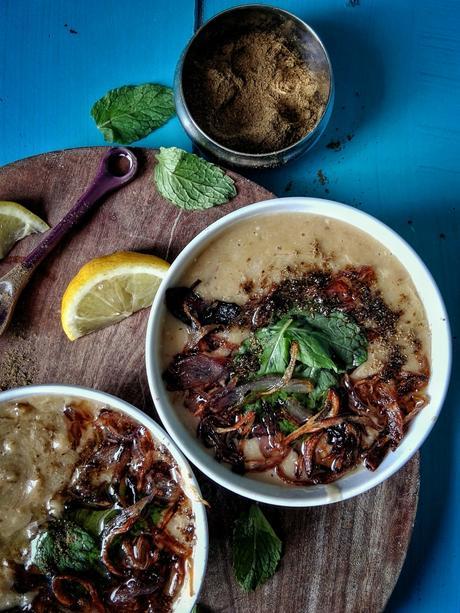
Traditionally, Haleem and Khichda are slow-cooked for 8 hours to form a thick sticky and succulent porridge which is why it is always considered as a (sweet) labor of love and dedication. But hey hey!, if you are doing this at home a sturdy blender jar, a quality wooden spoon and a pressure cooker serves a great purpose. However, if you want to get a taste of how it is conventionally done, you should definitely make a visit to one of those Mughlai restaurants in your city. As Khichda can only be procured from Bohri abodes (earn those Bohri friends ;) , I’d say! ), my favorite places to get Haleem in Dubai are Bundookhan and Nayaab Handi; Karachi Darbar and Ravi does it too spicy that overpowers the essence of the whole dish!
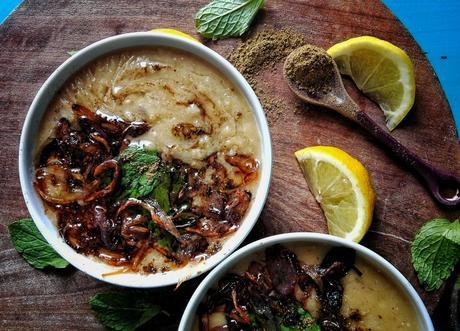
Like all soul warming dishes, Khichda too taste much better the next day when it has absorbed flavors from all the ingredients. I always make two batches on the same day, so that we can repeat the meal in a day or two to still stick around the comfort food as long as we can.
{The same Khichda can be converted into Haleem by grinding together cooked lentils and wheat with boneless mutton; and increasing the use of spices.} And if you are looking for a vegetarian version of Haleem, you should def follow my grandmother’s rice-lentil morning porridge recipe that is just as inviting as this!
If you make this recipe, kindly share your photos and feedback with the #thoughtsoverchaion Instagram and Facebook. I’d love to see your creations!
Bohri Khichda
- Difficulty: Medium
Ingredients:
- Mutton – 500 gms, with or without bone
- Onions – 4, thinly sliced and deep fried until crunchy (blot excess oil on a paper towel)
- Onion – 1, sliced
- Cracked wheat – 3 cups
- Rice – 1/4 cup
- Mix of four lentils (Chana, Masoor, Moong, Tuwar) – 3/4 cup, in equal parts
- Ginger garlic paste – 1 heaping tbsp
- Green chilles – 2, slit horizontally
- Cumin powder – 1 tsp
- Water as required
- Salt to taste
For tempering:
- Ghee or clarified butter – 1/3 cup
- Mint leaves – 1/4 cup
- Garam masala powder – 2 to 3 tbsp
- Lemon – 2, cut in wedges
- 2 Fried onions, from above
Method :
Soak cracked wheat overnight in a water reaching 2 inches above the wheat in a deep bowl. Next day, wash and soak chana dal for 30 minutes before using. Wash and pat dry mutton. Transfer meat to a pressure cooker and mix in ginger garlic paste, green chilles, sliced raw onion and salt. Cook on a high heat for 5 minutes and medium high for another 30 minutes until tender. Remove the stock and keep aside. Discard the water from soaked cracked wheat and move into same pressure cooker alongwith other lentils. Add double the water, salt to taste, cumin powder and pressure cook for 30 minutes on medium high. Switch off the gas and let it rest for pressure to release on its own. Grind in a blender (in 2-3 turns depending on the capacity of the jar) to a coarse to smooth mix. Transfer to a deep cooking pot alongwith prepared mutton stock and cook for another 20 minutes stirring the wooden ladle continuously on a medium so that it doesn’t stick to the bottom of the pot. Check for seasonings (add a slit green chilli if you’d like to add some more spice). To assemble, warm up the ghee until smoking hot. Spoon out khichda in a serving bowl, drizzle the hot ghee and garnish with mint, fried onions, garam masala powder and lemon. Serve immediately.
